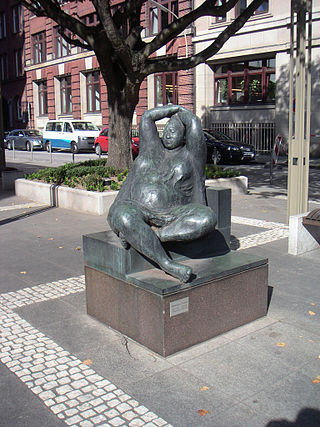
José Jesús Francisco Zúñiga Chavarría was a Costa Rican-born Mexican artist, known both for his painting and his sculpture. Journalist Fernando González Gortázar lists Zúñiga as one of the 100 most notable Mexicans of the 20th century, while the Encyclopædia Britannica calls him "perhaps the best sculptor" of the Mexican political modern style.

Luis Nishizawa Flores was a Mexican artist known for his landscape work and murals, which often show Japanese and Mexican influence. He began formal training as an artist in 1942 at the height of the Mexican muralism movement but studied other painting styles as well as Japanese art.

Juan Bordes. also known as Juan Bordes Caballero, is a Spanish sculptor. specializing in the portrayal of the human figure. He is the author of several books, the organizer of convention programs, and the subject of exhibitions.

José Antonio Zapata y Nadal, or y Dadad was a Spanish painter, active in Valencia.

Evaristo Muñoz Estarlich was a Spanish Baroque painter; a follower of the decorative style introduced to Valencia by Antonio Palomino. Some sources give his year of birth as 1671.
Juan UsléOceja is a Spanish contemporary painter. His work varies between abstraction and figurative representation. In 2002, he received the Premio Nacional de Artes Plásticas, a national arts prize awarded by the Ministerio de Cultura of Spain. He works both in New York City and in Saro in Cantabria.

Sebastián is a Mexican sculptor best known for his monumental works of steel and/or concrete in both Mexico and abroad. These include a number of “gate” sculptures such as the Gran Puerta a México in Matamoros, Tamaulipas but his most famous sculpture is the “Caballito” located in downtown Mexico City. His works are found in various countries outside Mexico, such as Japan where two are now used as city symbols.
Francisco Díaz de León was a Mexican graphic artist, notable for pioneering much of modern Mexican graphic arts. He spent his childhood around books and when he studied art in Mexico City, he specialized in engraving and illustration. He spent his career illustrating books, magazines and more, reviving techniques such as dry point and introducing new techniques and styles such as the use of color and linoleum printing. He was also a noted arts education, directing several schools including the Escuela Mexicana de las Artes del Libro, which he founded. He was a founding member of the Academia de Artes and a member of the Salón de la Plástica Mexicana. In 1969 he received the Premio Nacional de Artes for engraving.
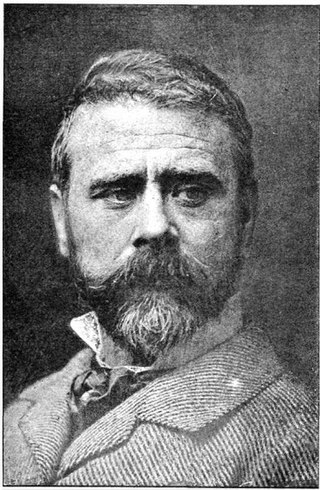
Antonio Cortina Farinós was a Spanish painter, decorator and art teacher.

Manuel Carbonell was a Cuban Contemporary and Modern artist, regarded as among the greatest Cuban sculptors of his generation. He was part of the generation of Cuban artists that includes Wifredo Lam and Agustín Cárdenas, that studied at the Escuela Nacional de Bellas Artes "San Alejandro", Havana, Cuba. Carbonell's inexhaustible vision and his ever-changing style is the product of a brilliant talent with an academic background. Ceaselessly searching for the essence of form and the absence of details, he empowered a sense of strength and monumentality to his work. Until the age of 92, he had continued to work daily in his studio.
Francisco Luque Palma is a Spanish sculptor.
Eusebio Sempere Juan was a Spanish sculptor, painter, and graphic artist whose abstract geometric works make him the most representative artist of the Kinetic art movement in Spain and one of Spain's foremost artists. His use of repetition of line and mastery of color to manipulate the way light plays on the surface give depth to his pictorial compositions.
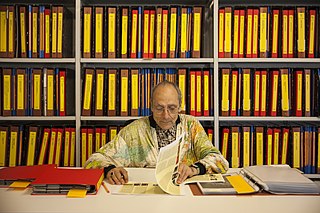
Antoni Miralda is a Spanish multidisciplinary artist.
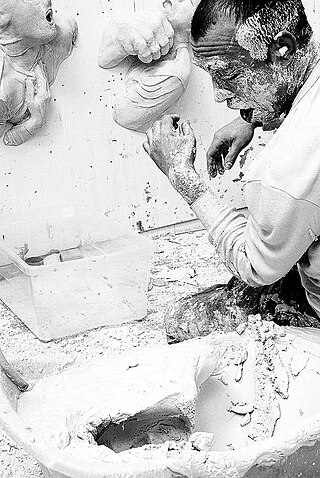
Lidó Rico is a Spanish expressive artist.

Pedro Miguel de Cervantes Salvadores was a Mexican sculptor who exhibited in Mexico and abroad and created large monumental works for various locations in the country. Some of his work is noted for its use of used materials such as automobile parts from junkyards. Cervantes received various recognitions for his work including Premio Nacional de Ciencias y Artes in 2011 as well as membership in the Academia de Artes and the Salón de la Plástica Mexicana.

Ricardo J. Vicent Museros was a Spanish printer and publisher. After studying in Germany he returned to Valencia with new methods of work, advertising and graphic marketing. He founded the "Museo Nacional de la Imprenta y la Obra Gráfica" in El Puig de Santa María. He promoted the twinning of the cities of Valencia and Mainz (Germany). In 1992, the International Gutenberg Society granted him the "Gutenberg Prize" and in 2003 he received the "Cross of Civil Merit" from the German government for his work in favour of cultural relations between Spain and Germany.
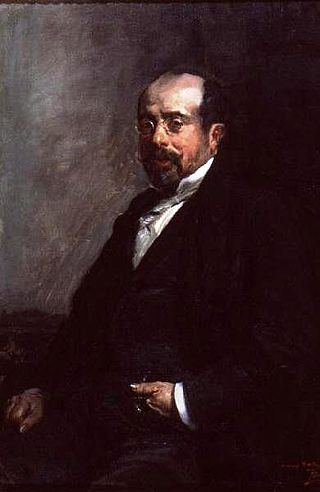
Antonio Muñoz Degrain was a Spanish painter who began in the Eclectic style, later in his career he moved towards Impressionism. He is best known for his landscapes and scenes inspired by works of literature.
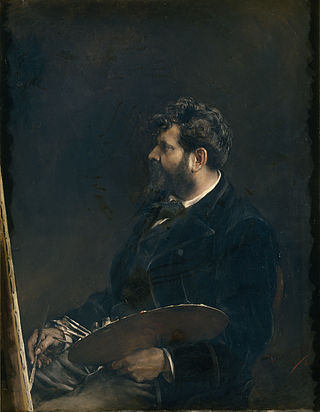
Francisco José Domingo y Marqués was a Spanish painter in the Eclectic style.

Carmen Calvo Sáenz de Tejada is a Spanish conceptual artist, noted for her contribution to the contemporary art of the Valencian Community.
Alberto Corazón Climent was a Spanish multidisciplinary artist who combined graphic design, sculpture, painting, and photography into his works. Some of his works are housed at contemporary museums including Bilbao Fine Arts Museum, Museum of Contemporary Art, Madrid, and Institut Valencià d'Art Modern. He worked as a graphic designer for clients including the organizations National Library of Spain, Autonomous University of Madrid, Anaya, ONCE, Círculo de Bellas Artes, and Renfe Operadora. He was inducted as the member of the Real Academia de Bellas Artes de San Fernando in 2006.














